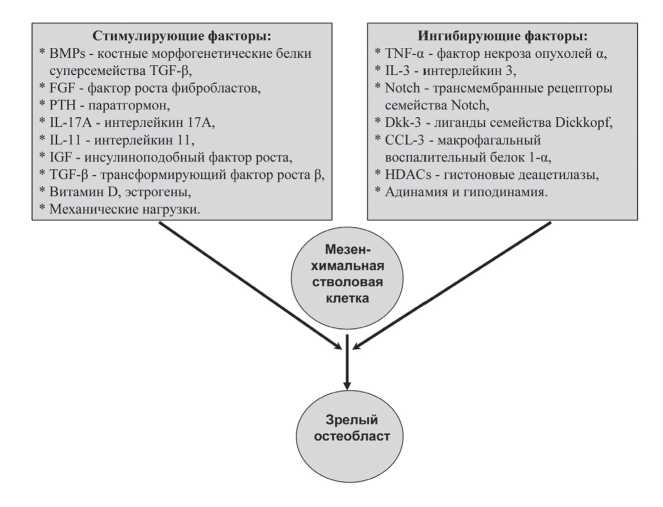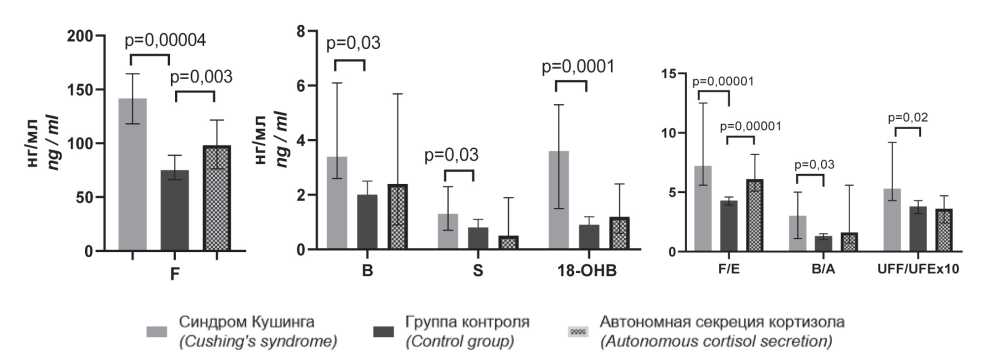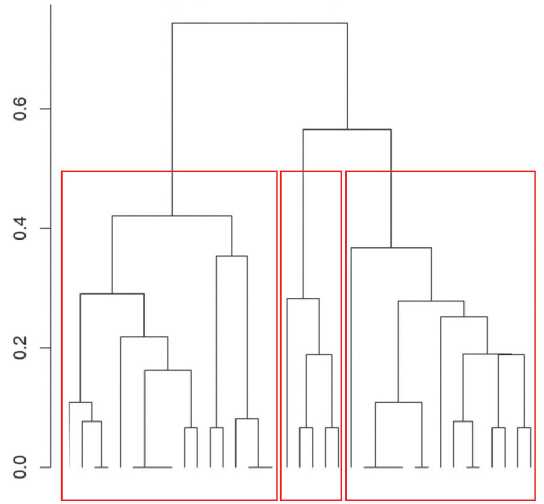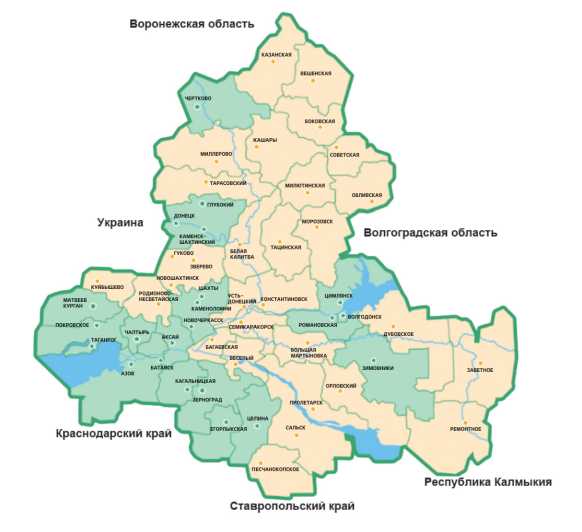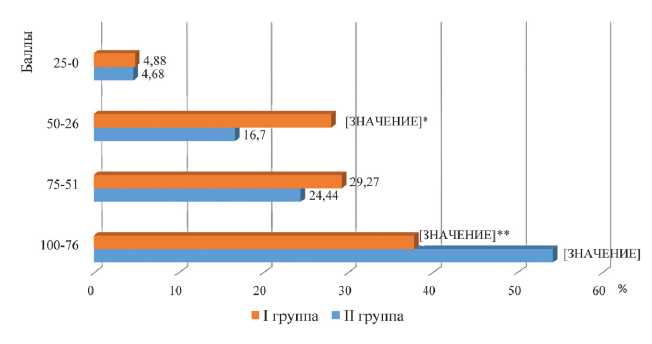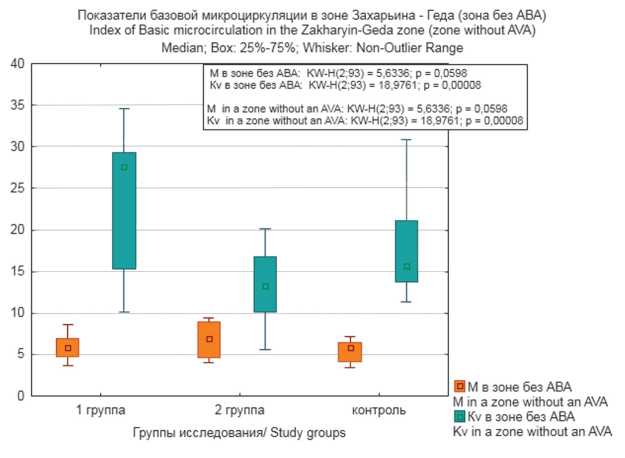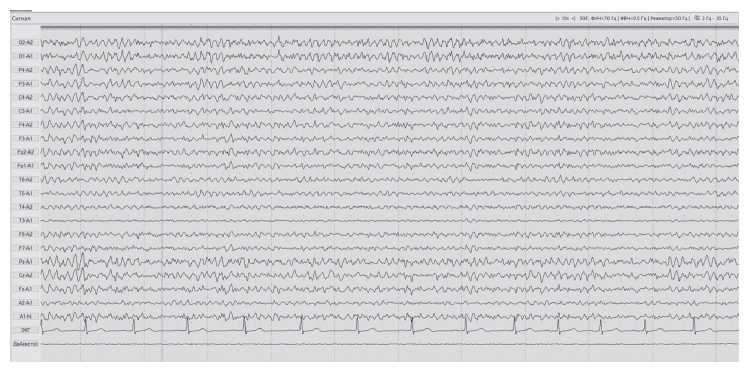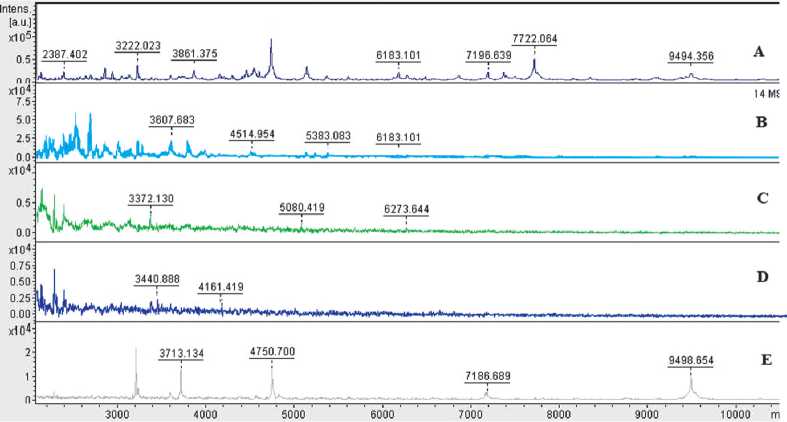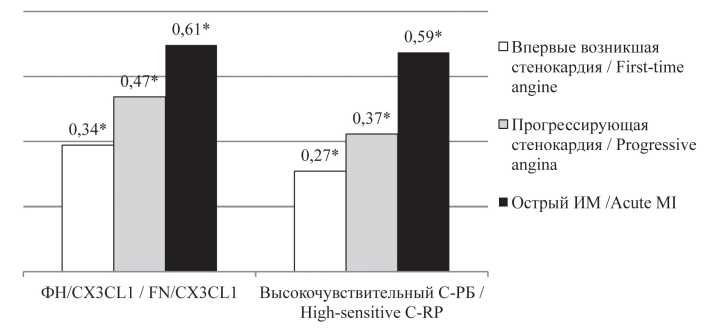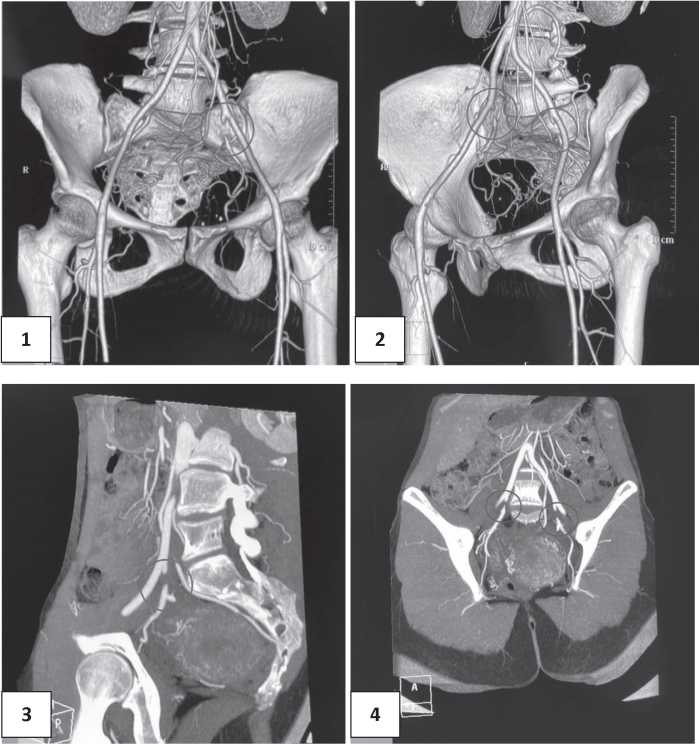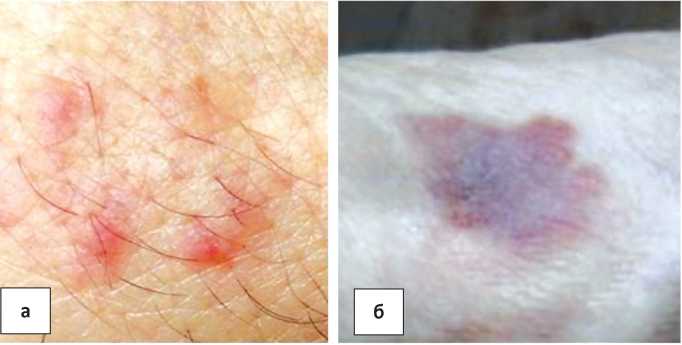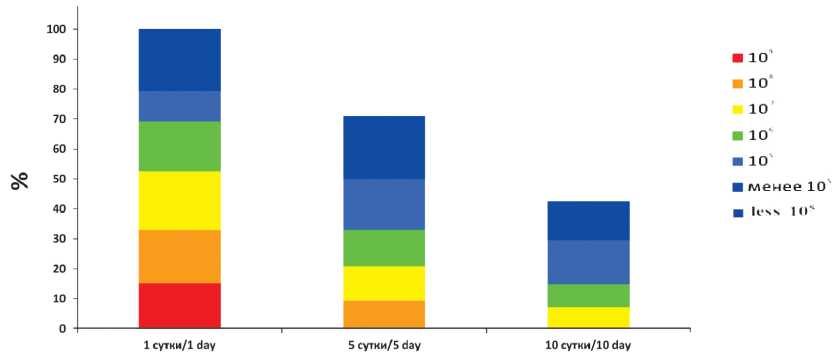REVIEW
About 20 years ago osteoimmunology was identified as new field of scientific knowledge. It studies patterns of immune and bone system interactions in normal and pathological conditions. The osteoimmunology achievements have fundamentally changed our ideas about the pathogenesis of human skeleton diseases, including osteoporosis. This review presents cytokines key role in physiological and pathological bone remodeling. The issues of interaction between cytokines, osteoblasts and osteoclasts are described in detail. The crucial role of proinflammatory cytokines increased production by immunocompetent cells in the postmenopausal osteoporosis development has been characterized. Pubmed, Scopus, Web of Science, MedLine, eLIBRARY.RU databases were used for systematic literature search.
The article deals with changes in sociological models of the professional role of a physician in a market economy. The article analyzes the importance of marketing in healthcare and models of providing medical services in Russian and foreign healthcare systems. Based on the accumulated literature data, it is possible to trace the dynamics of the relationship between the patient and the healthcare system towards the formation of consumer ideology and the importance of sociological research of the status and role parameters of the physician in order to improve the eff ectiveness and quality of provided medical care.
ORIGINAL ARTICLES
Objective: It is to evaluate the functional state of the adrenal cortex after surgical treatment in patients with corticosteromas for optimize of tactic of postoperative management.
Materials and methods: We examined 143 patients (43 men and 100 women) aged 51.3 ± 10.1 years with incidentaloma of adrenal glands and 27 healthy peopels (control group) aged 45.5 ± 5.7 years. Cushing's syndrome was detected in 22 patients, autonomous cortisol secretion was detected in 43. All patients had an analysis of the complaints, objective, laboratory and instrumental data in the preoperative and early postoperative periods. Assessment of levels glucocorticoid and mineralocorticoid hormones in biological fluids was carried out by immunoassay and high performance liquid chromatography.
Results: The signs of adrenal cortex insufficiency in the early postoperative period were obtained in 77.3% of patients with Cushing's syndrome and in 25% of patients with autonomous cortisol secretion according to immunoassay and high performance liquid chromatography. An increase of level of corticosterone in the serum of blood in the preoperative period indicate the possibility development of adrenal insufficiency in the early postoperative period in all patients. Аn increase of levels of 11-deoxycortisol and 18-OH-corticosteronein in the serum of blood аnd urinary excretion of free cortisone, 18-OH-corticosterone and 6β-hydroxycortisol indicate the possibility development of adrenal insufficiency in the early postoperative period in patients with Cushing's syndrome.
Conclusions: The determination of cortisol and aldosterone precursors by high performance liquid chromatography increases the accuracy of the diagnosis of glucocorticoid and mineralocorticoid function of the adrenal cortex in patients with Cushing's syndrome and with autonomous cortisol secretion in the early postoperative period.
Purpose: to study the microbiota of the colon in patients with various types of obesity and in healthy people.
Materials and methods: 37 people were examined (average age 39.6 ± 4.2 years) for the period 2018 – 2019. Formed 3 clinical groups. I group (n = 11) — healthy people with normal body weight (control), II group (n = 13) — patients with metabolically healthy obesity (MHO), III group (n = 13) — with obesity and metabolic disorders. In all patients, the basic metabolic parameters were studied and a quantitative assessment of the state of colon microbiocenosis was performed.
Results: compared to the formal-normative quantitative indicators, the examined fecal groups I, II and III showed unidirectional changes characterized by a decrease (p < 0.05) of Lactobacillus spp., Bifi dobacterium spp., B. thetaiotaomicron and an increase (p < 0.05 ) Enterobacter spp. / Citrobacter spp. Colon microbiota changes in groups II and III are characterized by the appearance of Proteus spp. and Klebsiella spp. (9.1 % and 8.3 % respectively). C. diffi cile (8.3 %) was detected in feces only in group III and the frequency of detection of banal E. coli was increased. Th e amount of F. prausnitzii was reduced (p < 0.05) in group III compared with group 1.
Conclusion: the data obtained as a result of a pilot study indicate changes in the microbiota of the colon in people with diff erent phenotypes of obesity.
Objective: to identify some «internal» and «external» risks that are signifi cant for the Rostov region and calculate their quantitative characteristics.
Materials and methods: materials for «internal» risks in the administrative territories of the Rostov region served materials FBUZ «Center of hygiene and epidemiology in the Rostov region» on the incidence of Crimean hemorrhagic fever (KGL) and West Nile (LSN) during the period 2004 – 2017 as a whole across the Rostov region and the slit regions, the data of the regional law «About administrative-territorial structure of Rostov region», the Results of the national census. To determine the «internal» risks, we used the guidelines developed by us «Methodology for assessing the territory of the subject of the Russian Federation on the integral indicator of population morbidity with arbovirus infections», approved by Th e decision of the Academic Council of the Rostov-on-Don anti-plague Institute of Rospotrebnadzor and approved by the Director.
Results: based on the results of the ranking of the territory of the Rostov region on the incidence of KGL and LDL, the degree of epidemiological risk was assessed and «risk territories» were identifi ed for these nosologies, which can serve as a basis for risk management — making scientifi cally based management decisions. To calculate the magnitude of the «external» risk and further spread of the disease, you can use various methods to assess the probability of adverse development of the epidemiological situation under the infl uence of various risk factors. Epidemiological risk can also be characterized by multiplying the individual risk by the population exposed to risk factors.
Conclusions: identifi cation and calculation of risk levels depending on risk factors will help determine the scope of management decisions, and the specifi cation of risk factors will allow you to develop specifi c measures to reduce risk.
Objective: of the study was to study the quality of life of younger students in the dynamics of their education in primary school.
Materials and methods: 573 children of primary schools of Rostov-on-Don were examined. Th e study of quality of life was carried out using the PedsQL 4.0 questionnaire. Depending on the level of cognitive development, children were divided into 2 groups: 82 children with high cognitive development made up the I (main) group and 491 children with an average level of cognitive development made up the II (control) group. Cognitive development was evaluated by the D. Wexler test, the Stanford-Binet intelligence scale with IQ coeffi cients, and E. Torrens creativity test.
Results: primary schoolchildren with high cognitive abilities show a dynamic decrease in physical functioning with the lowest rates in the 4th grade, lower indicators of emotional functioning, characterized by an excessive reaction to failure, an increased level of anxiety and emotional instability. A decrease in social functioning is revealed, manifested by communicative problems in the process of interpersonal communication. Higher school functioning values were observed. From the 2nd grade, schoolchildren with high cognitive abilities showed statistically signifi cantly lower indicators of the overall quality of life score as compared with children of average intellectual development.
Conclusions: among primary schoolchildren of high cognitive development, there is an imbalance in various aspects of the quality of life, which requires additional measures to optimize indicators.
Objective: to investigate the adipokine profile’s changes, depending on the presence or absence the signs of psychoemotional disorders in the form of associated affective symptoms in patients with stable coronary heart disease (CHD) without diagnosed carbohydrate metabolism’s disorders undergoing routine percutaneous coronary intervention (PCI) with stenting, and also to assess their relationship with clinical outcomes within 1 year after hospitalization.
Materials and methods: the study included 20 male patients with stable angina pectoris of functional classes II – III, hospitalized for coronary stenting. The severity of affective symptoms were being assessed. The levels markers of adiponectin, leptin, resistin in the blood plasma were determined before PCI and on the 3rd day after the operation.
Results: patients with stable coronary artery disease had increase in resistin concentrations and a decrease in adiponectin levels compared with reference. The change of psychoemotional status was accompanied by an initially more expressed increase in the concentrations of plasma resistin. The resistin’s level has been signifi cantly increased on the third day after PCI in patients without depressive symptoms. The dynamics of depressive symptoms hasn’t observed during the year. Clinically unfavorable outcomes, including stent’s restenosis, re-hospitalization, and the increase in angina attacks, were recorded more oft en in patients with subclinical symptoms of depression that persisted throughout the observation period.
Conclusions: the factors that negatively aff ected the cardiac prognosis were the disorders of the psychoemotional status and adipokine’s changes, including аn increasе of resistin’s and a decrease of adiponectin’s levels.
Objective: to assess the functional state of the microvasculature in children with diabetes mellitus type 1 (DM type 1).
Materials and methods: 63 children with a verifi ed diagnosis of diabetes mellitus type 1 were examined. Th e control group consisted of 30 practically healthy children. Methods: clinical, paraclinical (determination of glycated hemoglobin level, study of microcirculation indicators using laser Doppler fl owmetry (LDF), statistical.
Results: microcirculatory disorders accompanying the course of diabetes mellitus type 1 depending on the length of illness were identifi ed. In children with diabetes mellitus type 1 with standing less than 3 years an increase in the average modulation of blood fl ow mainly due to passive regulation mechanisms and the predominance of hypera adaptation in assessing the functional states of microcirculation of varying severity with an increase in the energy of oscillatory processes were observed. Signs of non-nutritive hyperemia in the zone rich in arteriovenous anastamoses and a decrease in perfusion due to an increase in perfusion fl uctuations and coeffi cient of variation in the distal extremities, as well as a decrease in amplitudes in the active tone-forming range, a gradual decrease in the energy of oscillations and randomness criteria were diagnosed with standing in the duration of the disease.
Conclusions: disorders in children with diabetes mellitus type 1 microcirculatory detected using LDF are staged. Th e contribution of non-nutritive blood fl ow to microcirculation increases as the disease progresses, which leads to tissue hypoxia. Evaluation of the combination of energy, information and non-linear parameters of the oscillatory component of the blood flow allows you to identify the type of functional state in the microcirculation system.
Objective: to establish the relationship between the presence of cognitive disorders in patients with arterial hypertension and changes in EEG, to assess the dynamics of these changes against the background of various modes of cerebroprotective therapy.
Materials and methods: the study involved 92 people with arterial hypertension, whose average age was 63 ± 8.2 years. The research was carried out on the device “Encephalan-EEGR-19/26”. To assess cognitive functions, patients were tested using the MoСA test. Patients with cognitive impairment were divided into three groups of dynamic monitoring with diff erent modes of cerebroprotective therapy.
Results: non-specifi c patterns in the slow-wave range were registered in patients with cognitive impairment during visual EEG analysis. In the quantitative analysis of the EEG revealed changes in the frequency and amplitude of the alpha rhythm, the power variation on the basic rhythms, the reduction of the total strength of the rhythms, the increase in relative power of slow rhythms in the frontal leads to the total power of the rhythms. After the treatment, most patients showed an increase in scores on the “Montreal scale”, a decrease in anxiety and depression on the” Hospital scale”, and an increase in the SF-36 index. Quantitative EEG analysis revealed positive dynamics comparable to the clinic and test data. The most favorable EEG dynamics was registered in groups of patients receiving neuroprotective and combined therapy.
Conclusions: the results obtained indicate the diagnostic value of quantitative EEG analysis and the feasibility of adding drugs that improve the metabolism and blood supply to the brain to standard antihypertensive therapy.
Objective: identification and comparative study of protein spectra of Vibrio cholerae biofilms by MALDI-ToF mass spectrometry.
Materials and methods: V. cholerae O1 strains isolated from different sources were studied. Methods: bacteriological, mass spectrometry.
Results: mass spectrometric analysis showed that it was impossible to identify strains from “plankton” samples and from chitin and plastic plates. After culturing the biofilm and plankton strains, all of them were assigned to the V. cholerae species with a Score above 2,300. A сomparative analysis of MALDI-ToF mass spectra of different variants of V. cholera cultures revealed differences, while general peaks with different intensity were maintained.
Conclusions: all samples of V. cholerae cultures taken for analysis aft er culture on a nutrient medium were reliably identified with a high Score. As a result of comparative analysis of protein mass spectra by the m/z value and relative intensity of peaks, no proteins characteristic only for plankton cultures or biofilms of V. cholerae were detected. The stability of the phenotypic properties of V. cholerae regardless of its form of existence and the high reliability of the MALDI-ToF mass spectrometry method for identifying both planktonic and biofilm forms of V. cholerae with the preservation of the research protocol and bacteriological culturation.
Objective: to study and analyze the links between endothelium-dependent vasodilation (EDV) indicators and the levels of fractalkine (FN/CX3CL1) and high sensitivity C-reactive protein (hs-CRP) in patients with acute coronary syndrome (ACS).
Materials and methods: among the examined individuals with ACS, 63 patients had acute myocardial infarction (MI); 41 patients had unstable angina (UA), represented by first – time angina in 15 people and 26 people had progressive angina. Control group included 20 healthy control individuals. Pharmacological test with 5% acetylcholine (AcH) was used to assess the functional state of the vascular endothelium. Enzyme-linked immunosorbent assay was used to determine the levels of FN/CX3CL1 and hs-CRP.
Results: all the examined patients with ACS showed statistically significant changes in EDV indicators compared to the control group, as well as an increase in the level of FN/CX3CL1 and hs-CRP. The most pronounced changes of the values of EDV indicators and the levels of FN/CX3CL1 and hs-CRP, from the examined patients, were detected among patients with acute MI. Th e presence of correlations between the studied indicators was revealed. Th e strength of the identified links was greater among patients with acute MI, compared to patients with UA. Th e strength of the links found in patients with both UA and acute MI was greater between EDV indicators and FN/CX3CL1 levels, than between EDV indicators and hs-CRP levels.
Conclusions:all the examined patients with ACS had the EDV disorders associated with the severity of systemic infl ammation. In the group of patients with acute MI, the severity of EDV disorders was greater than in patients with UA, which was apparently due to the infl uence of the resorption-necrotic syndrome, which potentiates increased systemic infl ammation and damage to the endothelium of microvessels with EDV disorders, which was confirmed by the results of correlation analysis. A positive link was found between the levels of FN/CX3CL1 hs-CRP.
Objective: to study the long-term eff ects of massive blood loss in parturition and the early postpartum period on the reproductive function and psychological status of women.
Materials and methods: the study included 49 women who were imposed compressive hemostatic sutures in the uterus due to the development of early postpartum hemorrhage. It was carried out a retrospective
analysis of medical records, prospective survey - 46 women, tested scales postpartum depression - 46 women and assessment of quality of life using the SF-36 scales - 36 women.
Results: the effi ciency of the compression joints method was 98 % (100 % exclusion criteria were coagulopathic obstetric bleeding), in 1 case the application of compression joints was ineff ective, which required uterus extirpation. In 14 women out of 48 (29.1 %), menstrual irregularities were revealed. In 28 (61.5 %) women, postnatal depression was confi rmed. In 30 out of 36 (87 %) women were found to decrease in quality of life. In 8 (16.7 %) women, a recurrent spontaneous pregnancy occurred within 2 years aft er suturing.
Conclusion. Compression sutures remain an effective method for stopping postpartum uterine bleeding, allowing women to maintain fertility. However, some factors, including high blood loss, can signifi cantly reduce the quality of women’s lives.
CASE REPORT
Today one of the main state tasks in the Russian Federation is to save people, which cannot be implemented without increasing the birth rate. Despite the fact that maternal mortality tends to decrease, bleeding remains one of the leading causes of death of women during pregnancy, childbirth and the postpartum period, so the fight against bleeding is one of the fundamental tasks in obstetric practice. The existing standards of step-by-step medical care for obstetric bleeding are successfully applied in practical health care, but the state of a woman’s reproductive function after the use of surgical hemostasis has not been sufficiently studied. This article presents an overview of a clinical case of reproductive function preservation in a 38-year-old woman after undergoing surgical hemostasis due to obstetric bleeding in the anamnesis.
EXPERIENCE EXCHANGE
Objective: to study the histological structure of various types of Kaposi’s sarcoma and the morphogenetic potentials of vascular cells in the tumor growth.
Materials and methods: results of the histological examination of Kaposi’s sarcoma from 5 patients have been analyzed: biopsies of the skin and subcutaneous tissue from 3 HIV-infected patients (2 men and 1 woman) and 1 man, a participator of the liquidation (dosimetrist) of the consequences of the Chernobyl accident in 1986. The tumor nodes of the Kaposi’s sarcoma of the stomach, lymphatic mesenteric node and dura mater of a 41-year-old woman who had died aft er allogeneic kidney transplantation due to glomerulonephritis were also examined while the skin was intact. Histological preparations were stained with hematoxylin and eosin, picrofuchsin according to Van Gieson, alcian blue and impregnated with silver according to Bilshovsky.
Results: it was confirmed that Kaposi’s sarcoma is the part of a multicentrally occurring viral lesion of the skin, subcutaneous tissue and internal organs caused by herpes infections of the 8th type on the background of immunosuppression. The entire process of tumor formation includes, besides the tumor growth, pre-tumor conditions (viral infection, chronic inflammation), and pre-tumor processes (intravascular neoplasia of low and high degree), which determining the diversity of the histological structure, clinical course, outcomes of neoplasms and complicates the correct diagnosis. The morphogenetic potentialities of endothelial and perithelial cells which make various variants of angiomatous structures, and also form spindle cell, myofibroblastic and fi broblastic components, are also important.
Conclusions: the fifth, not yet described in the literature, variant of Kaposi’s sarcoma is highlighted - radiation, due to exposure of radiation energy.
Objective: compare the effectiveness of using a moisturizer containing antibacterial drugs of plant origin with a water-soluble ointment that includes the antibiotic chloramphenicol in the treatment of victims with burns of the face II-IIIа degrees.
Materials and methods: The results of treatment of 27 victims (12 men and 15 women) with burns of the face and other areas of the body of I – II degree with a total area of 1 to 6 % of the body surface at the age of 18 – 60 years were analyzed. In the main group (13 patients), a cream containing antibacterial drugs of plant origin was used. In the control group (14 patients), bandages with a water-soluble ointment containing an artificial synthesized antibiotic chloramphenicol were used. Visually evaluated the course of the wound process, the nature and volume of exudate, the healing time of burn wounds when using ointments. Seeding of the wound discharge was done on the day of admission, on the 5th and 10th day of treatment. The structure and number of microflora of burn wounds were studied.
Results: in the third seeding of the main group, the concentration of bacteria was (2.4 ± 0.04) x103 CFU / g. in the third seeding of the control group, the concentration of microorganisms was (5.9 ± 0.03)×105 CFU / g. the duration of hospitalization in the main group was 18.1 ± 1.5 days, in the control group — 23.8 ± 1.9 days.
Conclusions: cream containing antibacterial preparations of plant origin, in comparison with a water-soluble ointment that includes an artificial synthesized antibiotic chloramphenicol, reduces the bacterial contamination of wounds in victims with superficial burns of the face by 2×102 times, the duration of inpatient treatment for 5 days (p < 0.05).
ANNIVERSARY
ISSN 2618-7876 (Online)



